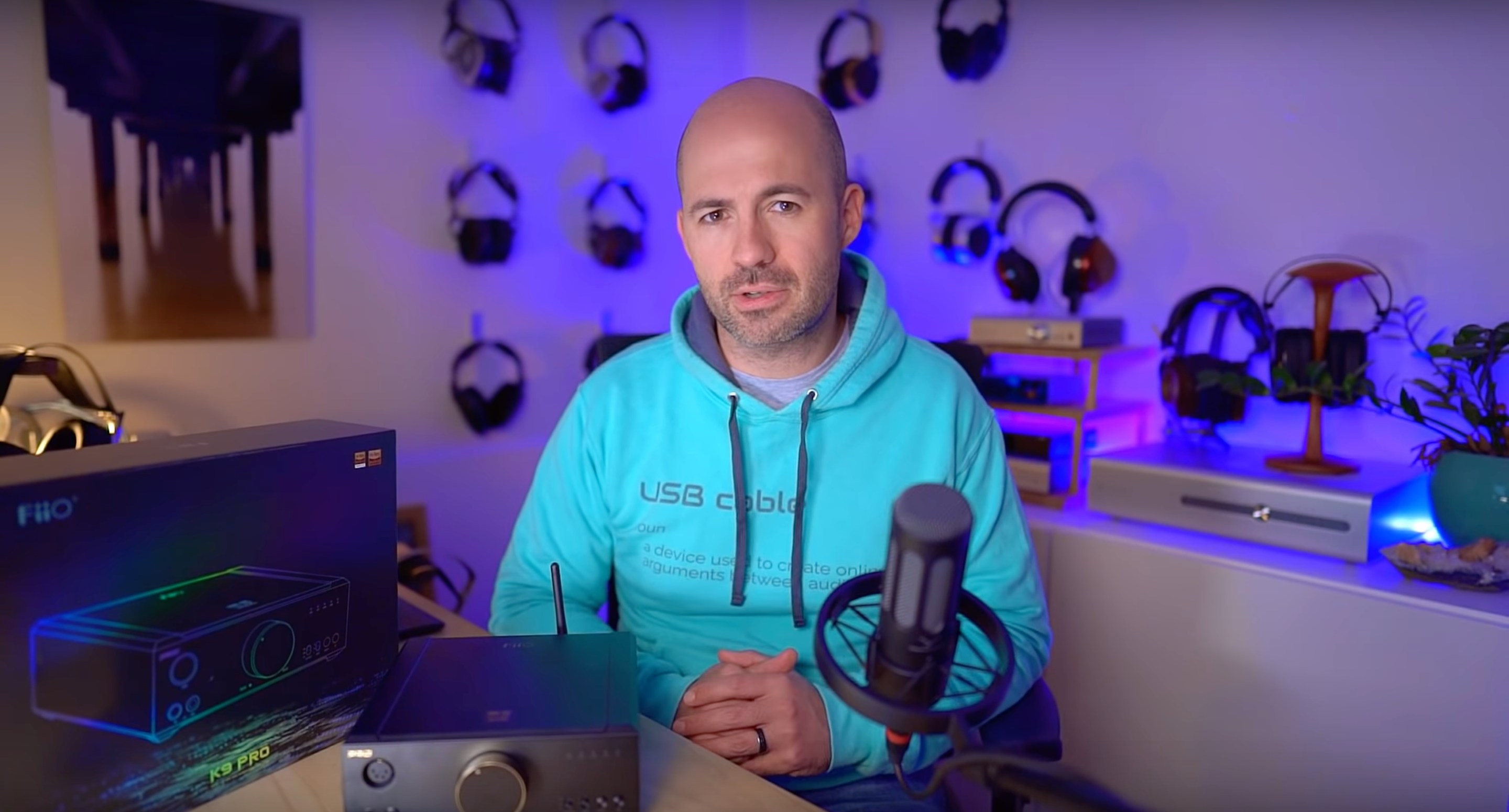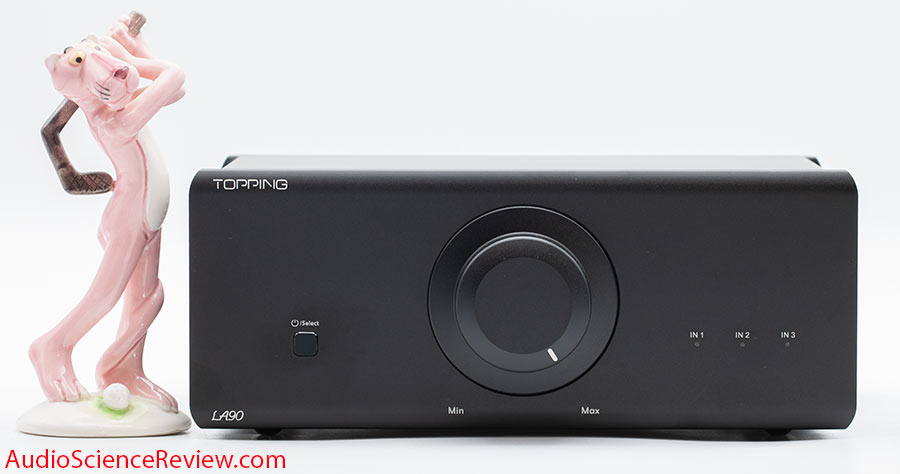
"My New Go-To Device" - FiiO K9 Pro ESS Review
Note: This article is based upon the video "FiiO K9 Pro ESS All-in-One / DAC-Amp Combo Review” made by Passion For Sound on their YouTube channel and is printed here in partnership with Passion For Sound. The review was originally posted on May 7th, 2022. Edits have been made for clarity and length. You can buy the FiiO K9 Pro ESS on Apos Audio.
Intro
Hey, folks, welcome to another Passion for Sound audio review. Today we’re taking a look at the K9 Pro ESS from FiiO. This is basically their flagship all-in-one device, and whilst not always being a fan of all-in-ones, I was keen to see how the K9 performed after being quite impressed with the previous generation K5.
The K9 Pro retails for $850 USD, making it a fair investment but still quite affordable in the scheme of things. You could buy yourself one of these for the same price (or less) than you might pick up a TOPPING A90 and D90 stack or an equivalent SMSL stack. So on paper it looks like a good value. Sometimes putting everything into one chassis means trade-offs and that was part of what I was keen to explore. Now, something I want to flag very early on is that I haven’t heard the K9 Pro AKM version, so I can’t compare the two. That said, I’ve got a whole bunch of comparisons coming, so make sure you watch all the way through if you want to see how the K9 Pro ESS stacks up to all sort of different competitors.
Features and benefits
To get things started, let's talk about some of the features and benefits of the k9 Pro. First of all, it uses a pair of DAC chips to completely separate the left and right channels. That therefore allows it to be fully balanced. Now, as I understand it, by using two chips instead of one leads to even better channel separation than using only one DAC chip.
Paired up with that DAC stage is a THX 788 plus amp. The THX 788 measures very well. Theoretically, it's a very clean, extremely low distortion amp. In practice, the THX designs and similar nested feedback designs sometimes result in a less-than-enjoyable, somewhat artificial and sterile sound. So that was one of my questions coming into this review: does the amp stage suck the life out of the K9 Pro ESS or is it actually good?
A couple of gripes
I want to cover just a couple of gripes that I’ve got about the K9 Pro ESS. The first one, for me, is kind of a non-issue, but I know for some people it’s important. The K9 Pro will handle DSD, high sample rate PCM, all of the super duper high-res formats no problem via USB. But when you switch over to coaxial and optical, all of a sudden it’s very very limited in bandwidth. You can run 192kHz as your maximum into the coaxial, and the optical is capped at just 96kHz. The reason I raise that is that in the current market, most devices now are handling DSD and high sample rate PCM through all digital inputs. As I said, it’s a non-event because 192kHz is plenty for all the different streaming services that I use. If you’re happy to use USB and Bluetooth, that’s where things are really strong in the K9 Pro.
While we’re talking about gripes and USB, another thing I want to mention is that when you switch away from the USB source, it switches off the USB circuit. Now, often that’s done to remove any potential noise being brought into the system through the USB circuit, but what it also means is that it’s going to drop out the connection from your computer and become invisible, so every time you switch back to USB there’s a bit of a lag. When the unit switches on, the computer sees the devices and it has to do the handshake again. Not a big deal, but it’s a little bit fiddly sometimes.
My final gripe with the K9 Pro ESS, from a design point of view, is the labeling of the switches on the front panel. Down the bottom of the front panel here we’ve got four different switches and there is some labeling on the front panel but unless you’ve got a bright light shining directly on the unit there is no way you can read it from a distance. Of course, over time, you kind of get used to which switch is which, and which position is which, but I don’t like the fact that you’ve really got to look closely when you first start using the product unless it’s in a brightly lit location.
K9 Pro ESS companion app
The K9 Pro ESS has its very own companion app that allows you to control a lot of what the K9 Pro ESS does via the app. Using Android or iPhone, you can connect your phone to the ESS Pro via Bluetooth–and this works regardless of whether you’re actually sending music via Bluetooth or USB. If you’ve got a USB connection, coaxial, optical, etc, you can connect to the app and change all sorts of settings. There are filter settings, which do make a decent difference on the K9 Pro. You can also add EQ settings, balance, or cosmetic changes like the ring light around the volume control. In my experience, the app worked very very well. It was pretty seamless.
Sound quality
So when it comes to sound let me start off by saying that the K9 Pro ESS is clean, articulate, and enjoyable. It’s not at all sterile. It’s not a particularly organic or rich-sounding device, but to me it just sounds right. It’s neutral. It’s clean. It sounds like a high quality, good-measuring amplifier that hasn’t drifted into sterility.
There’s a really good sense of separation and image clarity in what is overall a fairly flat sound stage, but with a good sense of width that does change slightly depending on the filter you choose. But it’s never going to get particularly deep.
When listening to it in isolation, I felt like there was no specific coloration or tonality from the amp–or the DAC, for that matter, because I was listening to it as an all-in-one–and that’s generally a good thing. You don’t often want too much coloration coming from your DAC and amp, particularly from your DAC. If you’re buying a device like this, you probably want something pretty neutral. If you want to add warmth and richness, you can always take on a secondary amplifier to give you that flavor, but as an all-in-one device, I think it’s the right choice to get something pretty neutral, and then you can choose coloration through your headphones or EQ.
Balanced vs single-ended outputs
The difference between these outputs was minimal, but there was a slight difference. I feel like the balanced output has just a little bit more clarity and separation, and that leads to a slightly wider sense of space in the sound stage. But it wasn’t night and day, and that’s great.
This is one of those devices where you can happily use it single-ended or balanced and not feel like you’re trading off a lot if you’re not using balanced. There’s no doubt in my mind that balanced is slightly superior, but it’s not a big enough difference to worry about.
Vs the TOPPING DX5
To really put this into context, I’ve got two different all-in-ones that I want to compare with the K9 Pro. The first one is the cheaper TOPPING DX5, which retails for $449 USD, making it a solid $400 less than the K9 Pro.
Putting aside features and comparing these purely on sound, I felt like the K9 Pro had just a slightly more natural sense of tonality and timbre in things like vocals and instrumentals. It was just a little bit more what I would call organic. The DX5 slightly over-enhanced the details. It wasn’t bad by any stretch, but the K9 Pro ESS just came across as more natural. There were lots of details and textures from both devices on things like the vocals and backing vocals, but the K9 Pro ESS just sounded more real and lifelike, whereas the DX5 just sounded a tiny bit over-enhanced, like the contrast had been turned up just a touch too much.
As I listened more and more, one of the things I found, and I don’t know if this is accurate what I’m about to say, but it sounded like the K9 Pro was allowing just a little bit more decay in the sound, whereas the DX5 was clipping the sounds off. It was just a little too quick to chop off the ends of notes and make everything very clipped and sort of over-articulate, whereas the K9 Pro ESS gave music the space and time to breathe and that made it sound more natural. Again, I don’t know if that’s actually what was going on, sonically and technically, but it was the listening experience I had.
If you do have the money to spare, the K9 Pro is clearly the better device.
Vs Chord Mojo 2
The Chord Mojo 2 is a sort-of competitor of the K9 Pro. I say sort-of competitor because it has nowhere near all the features of the K9 Pro ESS. It’s not a desktop-style device. There’s no balanced. It’s got no Bluetooth. And it’s nowhere near as powerful as the K9 Pro. But at $700, it is a very high-performance all-in-one DAC combo that also happens to offer features like Crossfeed and EQ, so I was keen to see how it compared.
The K9 Pro came across as immediately more energetic. It brought everything closer to me, which helped me focus on the vocals. On the other hand, the Mojo 2 produced a better sense of depth and sound stage. It also produced a greater sense of space between the listener and the music. It didn’t push everything a long way away but just enough so that you feel a sense of overall space. It allowed me to hear that the drums in the recording are actually behind the singer. The K9 Pro ESS, on the other hand, presented things with a normal flat sound stage approach that most SABRE AKM and other delta sigma DACs tend to produce. Interestingly, having just come from the DX5 comparison, I felt that the the Mojo 2 was now the one that seemed a bit more natural and organic in its sound, and the K9 Pro, in contrast, started to sound a little bit overdone in terms of the detail and the contrast. Now, that doesn’t mean that the Mojo 2 is smoothing everything off. It’s just allowing everything to sound a bit more natural and a bit more organic overall, whereas the K9 Pro does show that in contrast and context that it has a little tiny hint of that artificialness and sterility that often comes from these nested feedback designs. That’s not a knock against the K9 Pro though. It’s a wonderful-sounding device, but in comparison of the two devices, the Mojo 2 does just get the edge in terms of its natural presentation of sounds. The K9 Pro is still a wonderful, wonderful device.
To be really clear with what I’m saying here: if sound quality and only sound quality is your key, then the Mojo 2 might be the better choice. But if you’re looking for the feature set, if you’re looking for a main desktop unit that gives you USB functionality without spending more on an add-on, if you want to interact with it and change things and all those sorts of features, then the K9 Pro ESS is clearly the better device.
In terms of sound quality, I’d rate the Mojo 2 as maybe an 8.5/10, and the K9 Pro ESS as an 8 or 7.5/10. And that would largely depend on the track I was listening to. My point is that they’re pretty close, with a slight edge going to the Mojo 2.
Conclusion
To bring all this to a close, I’ve been really impressed by the K9 Pro ESS. It’s actually become my new go-to device sitting under my desk here for all my general purpose editing, mixing, a bit of game-playing, movie-watching–all those sorts of things. The K9 Pro ESS is a fantastic device. It’s not going to be replacing things like the Yggdrasil or the Chord TT2 anytime soon for music listening, but for other general purpose listening, where it’s more about the feature set, the convenience, and it’s not all about the sound quality, the K9 Pro ESS is absolutely wonderful. That’s not a knock against the K9 Pro ESS. My point is it doesn’t and shouldn’t stack up to multi-thousand dollar devices when it’s an $850 all-in-one. I think at that price, it’s an incredible value, and it easily stacks up with DAC/amp combos of separates in a similar price range, but it comes in this beautiful sleek case that captures everything in one package. So if you’re in the market for an all-in-one, I do think the K9 Pro ESS is an excellent choice.


